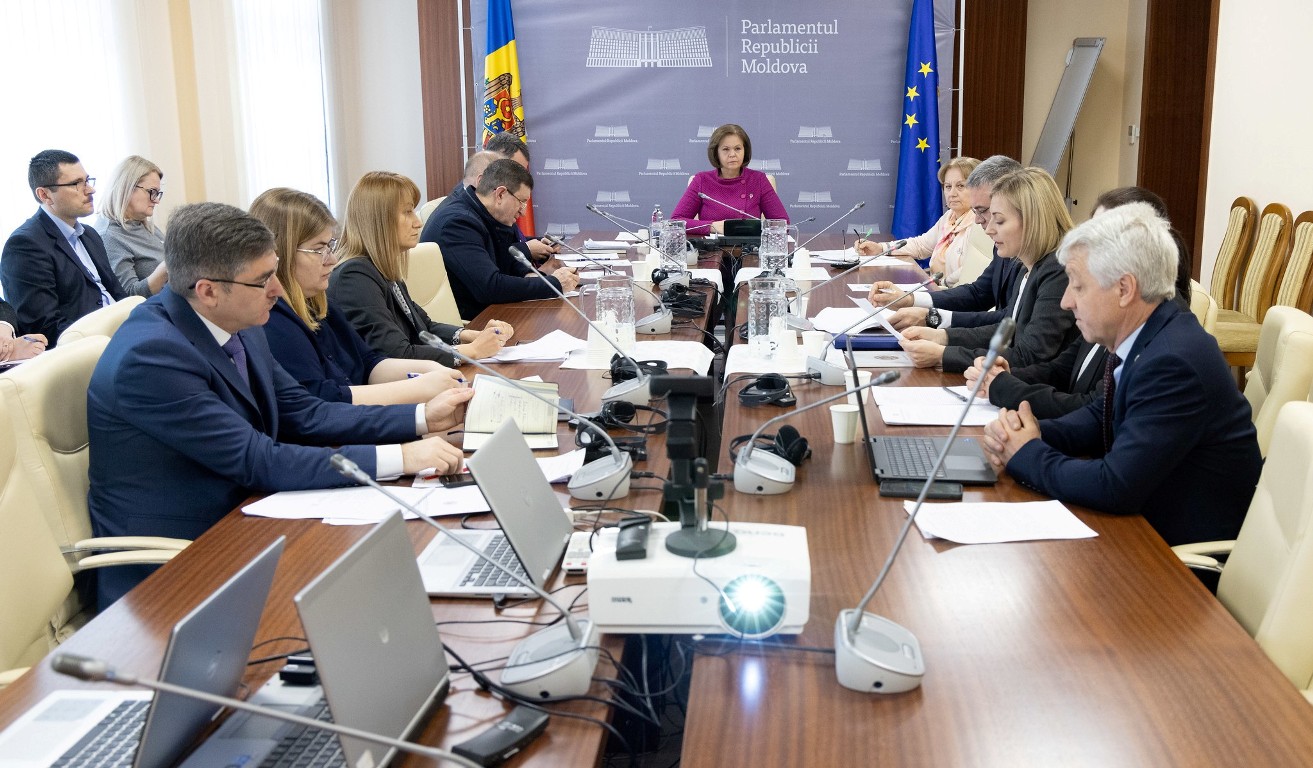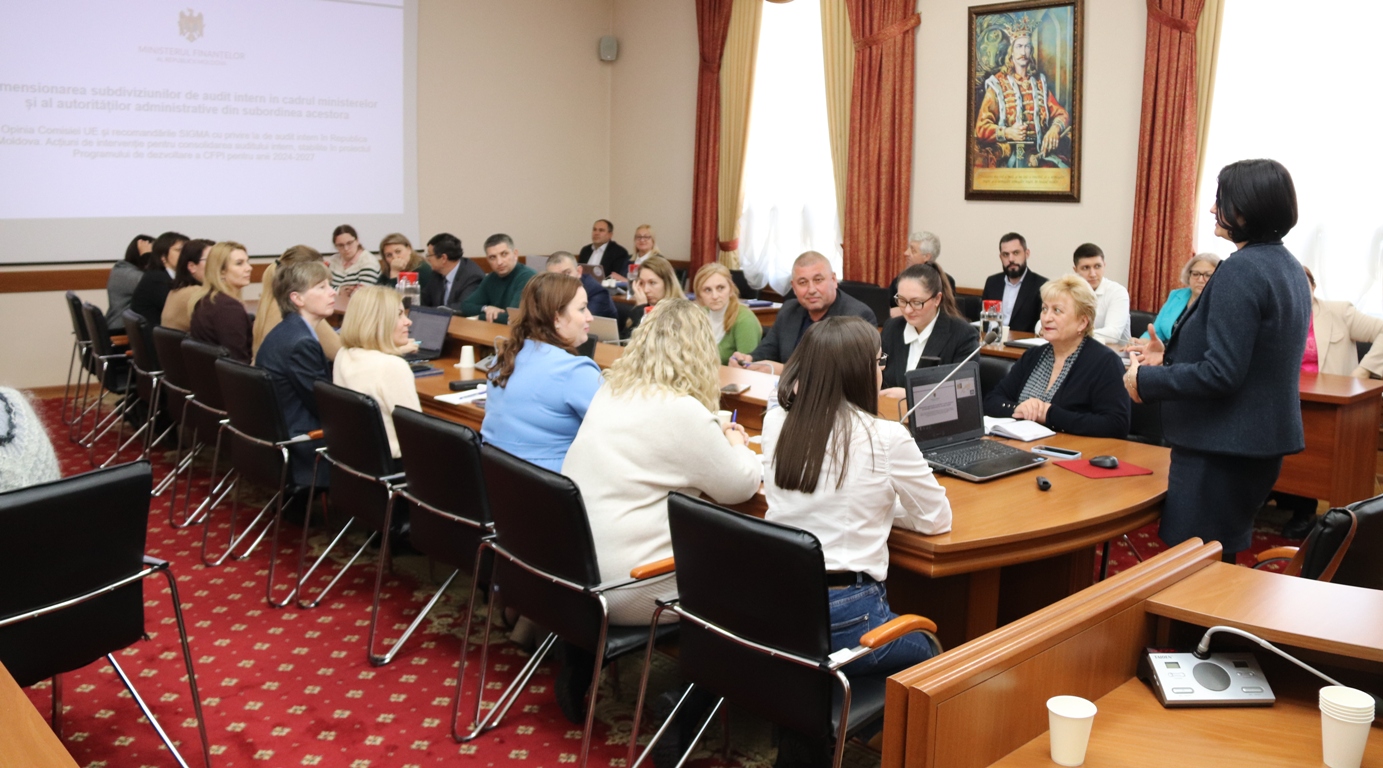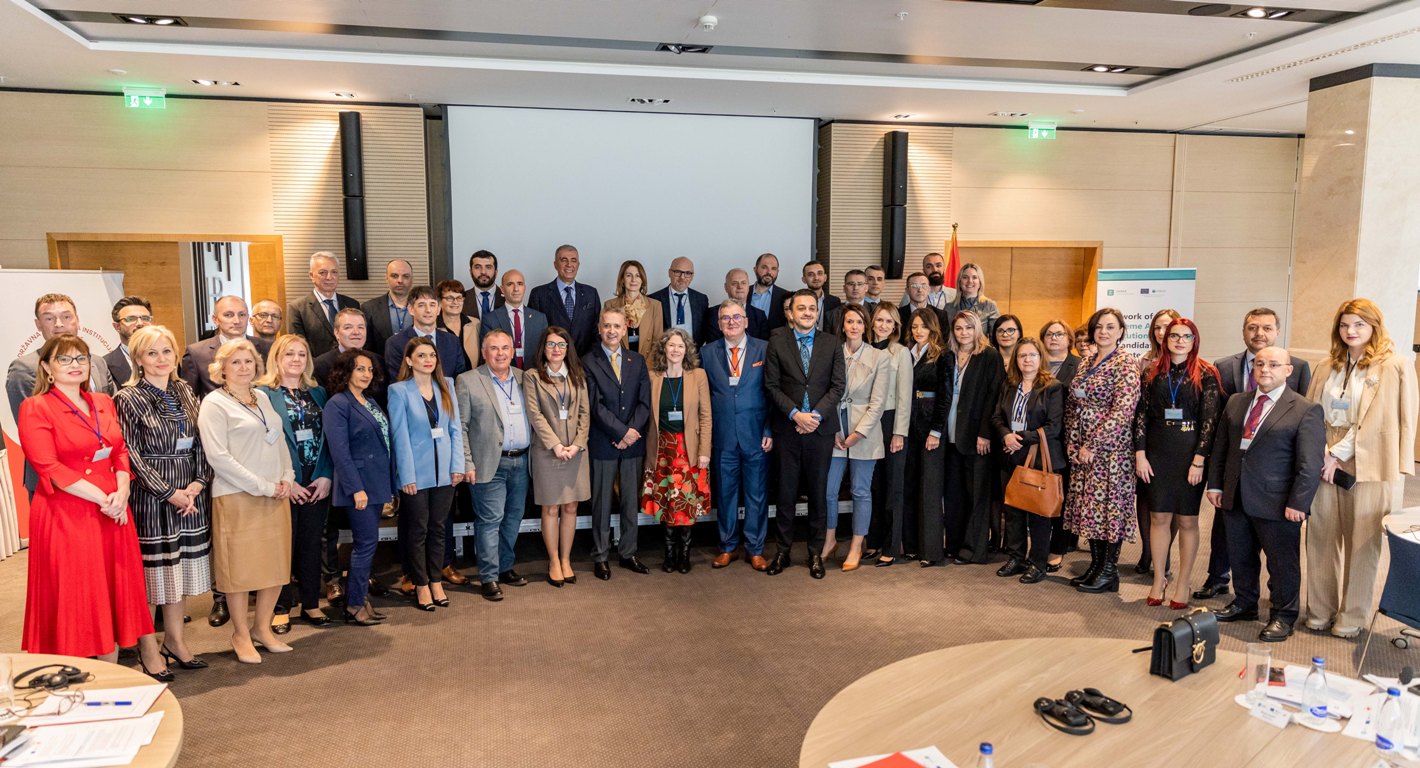.JPG)
The problem of drinking water supply and sanitation is recognized at all levels as important and among national priorities, being considered, at the same time, as a factor for improving the quality of life and reducing poverty.
The results of the performance audit report "Progress achieved in the implementation of the Water Supply and Sanitation Strategy (2014-2030)" were examined today, April 6, during the meeting of the Court of Accounts of the Republic of Moldova (CoARM).
The general objective of the Strategy is to gradually ensure access to safe water and adequate sanitation for all localities and the population of the Republic of Moldova, thus contributing to the improvement of health, dignity and quality of life, and to the economic development of the country.
The findings and conclusions of the audit present the level of achievement of the objectives of the Strategy for the years 2014-2022, the effect of the actions undertaken, the causes that caused impediments to their full realization and the efficiency of the use of sources directed to the field of water supply and sanitation.
Following the application of the audit procedures, both problems related to the implementation of the measures included in the Strategy were found, as well as some deficiencies that concern the entire water supply and sanitation sector as a whole, namely:
- The audit certified the lack of a single Action Plan regarding the development of the field of water supply and sanitation at national level, the development of that field being included in several Strategies, incorporating objectives and indicators related to the field of water supply and sanitation.
- The measures included in the Action Plans of the Strategy did not contribute to increasing the number of regional operators providing public water supply and sanitation services. As a result, the number of regional operators increased by only one regional operator, from 8 in 2014 to 9 in 2022, regionalization being carried out exclusively within projects with external funding.
- The decision-makers (Ministry of Agriculture, Regional Development and Environment/Ministry of Environment), responsible for the implementation of the Strategy, did not organize the collection, processing and evaluation of data on the total investments made in the field of water supply and sanitation.
- During 2014-2022, the implementation of the projects was carried out from several funds of the state budget (the National Ecological Fund (NEF), the National Regional Development Fund (NRDF), the National Fund for Regional and Local Development (NFRLD), the National Fund for Development of Agriculture and the Rural Environment (NFDARE)), as well as from external sources, the total value amounting to 4 billion 678.5 million lei. The major share of investments in the water supply and sanitation infrastructure comes from the resources allocated from the NEF (2 billion 350.5 million lei), which represents 50% of the invested sources, followed by external sources (1 billion 405.9 million lei), respectively 30% of vested sources.
- From a territorial point of view, the largest investments were made in the districts of Leova (336.1 million lei), Florești (260.2 million lei), Fălești (247.2 million lei), Ungheni (282.9 million lei), Edineţ (247.2 million lei), Căușeni (234.2 million lei), etc.
As a result of the investments made during 2014-2021, the following results were achieved in the field of water supply and sanitation.
According to the data of the National Bureau of Statistics (NBS), a large part of the indicators related to the field registered increases. Thus, the following increased: the number of public water supply systems, the total length of water distribution systems and aqueducts, the number of wastewater treatment plants, the number of sewage systems and their length, etc.
The number of localities connected to water supply and sewage systems has also increased. Thus, between 2016 and 2021, the number of localities connected to sewage systems increased by 1.9%, from 6.8% in 2014, to 8.7% in 2021, while the connection of localities to power systems with water is much higher. Thus, in 2014, 31.3% of localities were connected to the aqueduct, and in 2021, 59.9% of all localities were connected, registering an increase of 28.6%.
Another attested problem refers to the fact that at the moment, no structure in the country has complete and extensive information regarding the infrastructure related to the field of water supply and sanitation, which makes it impossible or difficult to assess the situation in the field. Data related to public water supply and sanitation systems are collected by the NBS, part of the data are collected by the Environmental Protection Inspectorate (EPI), and another part of indicators are collected by NAER from authorized operators.
According to EPI’s data, a large part of wastewater treatment plants do not provide purification at a normative level, at the end of 2021 only 13.9% of wastewater treatment plants comply with the norms, 76.6% have insufficient purification, and 9.1% are with partial purification.
Technological consumption and water losses are part of the important indicators for the correct operation of water distribution networks and represent the correlation between the volume of water captured - supplied - water losses.
In 2016, from the volume of water captured, only 68.3% of the water was supplied, and 31.7% were losses. In 2021, the situation improved, from the volume of water captured, 78.9% was supplied, and losses in the network decreased to 21.2%, however, even this diminished percentage presents an alarming report with reference to the current situation of water resources that have become quantitatively and qualitatively limited.
The large water losses are mostly due to the condition of the water collection, supply and distribution infrastructure, which have advanced wear or 100% and were built in the 90s of the 20th century.
Between 2014 and 2021, the NEF Board of Directors accepted 580 investment projects for financing, and 1471 financing contracts were concluded.
In this context, were identified problems that led to the non-completion of initiated projects. Thus, over the years, some of the projects, even though they were initiated, were excluded from financing, as a result of the insufficiency or lack of contribution, non-compliance with the clauses of the financing contract, etc., they have not yet been completed, continuing the increased risk of damage and degradation of the works already executed, of waste of money and inefficient use of public money.
The audit revealed that during 2014-2022, out of a total of 580 projects carried out by the NEF, for 216 contracts concluded between the contractor and the beneficiary, 328 agreements were signed for the extension of the project implementation period and 303 agreements regarding the modification of the value of the joint venture contracts. As a result, the initial value of the contracts was increased by a total of 338.8 million lei, some projects still not being completed.
Not all investment projects carried out through the NEF are subject to verification of the quality of the execution of construction works. Thus, the implementation of 19 projects was carried out without ensuring technical supervision. At the same time, within the controls carried out by the Technical Supervision Agency, were established cases of overconsumption of construction materials, energy resources and other resources compared to consumption norms and execution drawings, as well as unexecuted works, included in the cost of the object presented for reception. Consequently, the results of the controls for 4 investment projects were submitted to NAC and SIS, the ascertained value of the deficiencies to be recovered amounting 16.25 million lei.
In 2022, the National Ecological Fund was reorganized into the National Environmental Fund (NEF), creating the Public Institution National Office for the Implementation of Projects in the Environment Field, subordinate to the Ministry of the Environment. The reception-handover process between NEF and NEF lasted 2 months (December 2022 – January 2023), during that period the financing of the projects was suspended. The overall value of the contracts for financing taken over from the NEF was 129.46 million lei, but in the budget of the NEF for the year 2023 budget allocations were approved in the amount of 93.08 million lei, which represents a deficit of 36.37 million lei.
The tariffs for the provision of water supply and sanitation services to several operators have not been changed over several years. Thus, in 2014, losses of 225.7 million lei were recorded within 27 out of 36 companies analyzed. In 2021, the number of companies recording losses increased to 32, the amount of accumulated losses increasing more than 5 times, at the end of 2021 constituting 1 billion 330.2 million lei.
With reference to the projects implemented from the NFRD, it was found that, within 3 projects, with a total value of 87.4 million lei, although water supply networks were built, they are not exploited. The low-quality preparation of technical documentation within a project, in the amount of 20.8 million lei, caused the delay in its completion, and the extension of the deadlines for the realization of 4 projects worth 122.05 million lei, led to their inclusion in several Single Program Documents.
The limited amount of public financial resources available, which would cover the integral needs for the financing of the objectives, led the beneficiaries to divide large-scale projects into funding stages, consequently leading to the extension of their implementation terms and to the increase of costs.
With reference to the quality of water distributed through the central water supply and sewage systems, it is attested that a small percentage of the population has access to improved sanitation and drinking water services in accordance with the quality parameters. Most of the water volumes do not meet the technical requirements for drinking water, the population being served with technical water instead of drinking water, which consequently harms the health of citizens. The same situation applies to wastewater treatment systems, only the newly built stations meet the technical parameters.
Another subject addressed by the auditors was the improper organization by IEP of the record of fines and damages calculated, paid and cancelled. The accounting mechanisms do not allow the assessment of the bonds against the state budget, and respectively the fullness of their collection, mostly being compromised as a result of the statute of limitations, with an estimated 0.8 million lei of fines and 60.3 million lei not being collected from damages caused to the environment.
In conclusion, the Court of Accounts mentioned that on the part of the decision-makers and participants in the water supply and sanitation process, urgent and urgent measures are needed to improve the observed situations.
 WITH DEFICIENCES OF VIEW
WITH DEFICIENCES OF VIEW Youtube
Youtube Facebook
Facebook


 print
print




